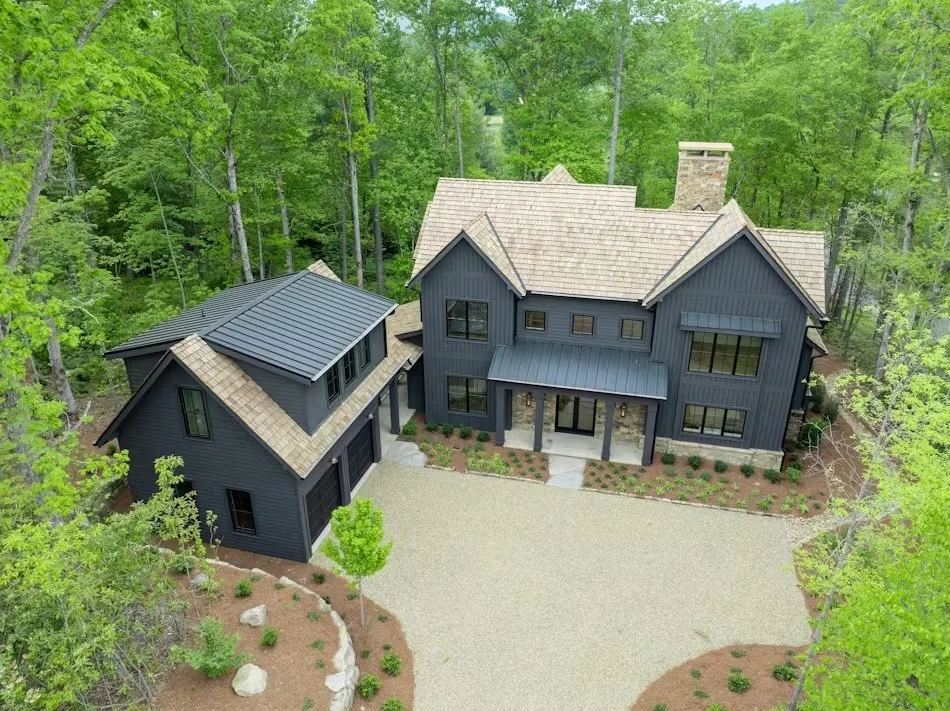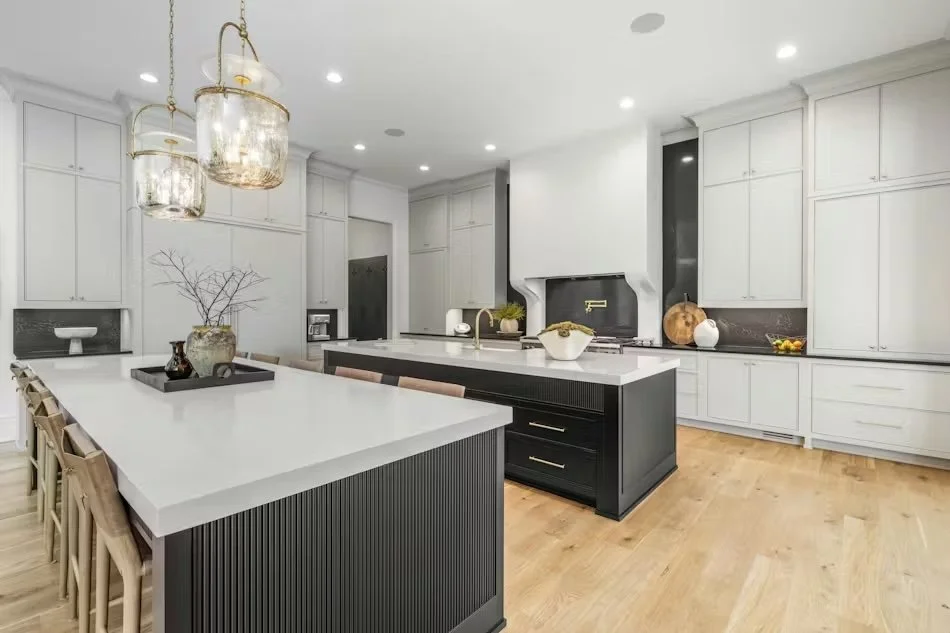Custom Builder Article: From IBM to Luxury Builder: How Corporate Roots Shape Loudermilk Homes
Sherwin Loudermilk developed the do's and don'ts for his custom home business from a high-stakes career in tech sales.
July 29, 2025
Builder in 5 is our five-question series with the minds behind standout custom homes.
Up next: Sherwin Loudermilk is the Founder, CEO and President of Loudermilk Homes in the greater Atlanta area and Western North Carolina. Building high-end homes for busy, successful clients, his team often starts with questions about daily routines to shape how the home should function. The goal is always to design around real life, he says.
1: You made the leap from IBM to custom home building; how has this shaped the way you run Loudermilk Homes?
Sherwin Loudermilk: Coming from a background in corporate America taught me many of the do’s and don’ts of my business. IBM was a fast-paced company ... it was both a rewarding and grueling experience. I had to learn how to think on my feet, compromise, and get creative in the art of the deal. By the end of my journey with IBM, I was the youngest senior executive of sales in the history of my branch.
But as much as I was benefitting in my careeer, I noticed that I was aggregating a debt in lost time with my family. I was also developing a hankering for entrepreneurship. Eventually, I told my wife Roane (really, Loudermlik Homes would never have existed without her). She's the kind of person that sees a need and fills it, anything to make you fly. And that's exactly what happened. We started doing home renovations. I quit IBM, and then we did a full dive into custom home building.
One of the most important things I learned from IBM was how to “stop stopping.” There are so many moving parts in building a home that it is almost impossible to have a totally smooth build. But what we can control is our cadence. If a vendor isn’t answering the phone, keep calling. If a jobsite isn’t clean, get a broom sweep. If you know you can get a better pricing, fight for it. Do what you need to do to get the job done and be a timely problem solver.
IBM also taught me the value of proper communication; a quiet team has lost before the game has even begun. At Loudermilk Homes, we take it a step further. No matter what your role is in our company, you will be given the same respect as our highest executives...All of our employees understand that the job requires being comfortable in discomfort, and that is no excuse for staying silent.
The last point I’ll make about IBM is something I picked up both at the company and also in my personal life. There’s a saying in big business: “climb the corporate ladder.” It created a very competitive environment at IBM ... the work hours are long and tough, but the goal is that with each accomplishment you will take a step towards the next ladder rung. People stayed there for years, but not because of the culture, it was because of that incentive. So when I started Loudermilk Homes, I knew right off the bat that I needed to create a work environment that people wanted to be a part of. Of course, at any company, there are opportunities for growth and promotion. But I wanted that primary incentive to stay at Loudermilk Homes to be for the people you worked with.
“Do what you need to do to get the job done, and be a timely problem solver.”
2: You put a lot of weight on preconstruction. What do most builders miss at this stage that ends up costing them time or money later?
Loudermilk: Preconstruction is where everything is won or lost. I think most builders skip over it too quickly. They’re eager to break ground—and I get it, it’s exciting—but they haven’t done the work to set the project up for success. We’re a true design-build firm, which means we’re hands-on from day one: with the client, the architects, designers, and trade partners. It lets us take the client’s vision and align it with a realistic budget from the start, instead of designing something beautiful only to find out later it’s a million dollars over what they planned for. That backtracking is what costs time, money, and morale.
We ask a lot of questions in the early stages. We want to understand exactly how the homeowner lives, what matters most to them, what they dream about. That guides everything; square footage and bedroom counts to lighting fixtures and architectural style.
Once we’ve landed on a vision and budget, we go ahead and pre-select everything. That’s the hard part. But it’s why we can move like a well-oiled machine during construction. We’re not stopping mid-build to make decisions. Everything’s ready. It’s more efficient, more cost-effective, and we don’t end up redoing things just because a detail got overlooked. The process takes discipline, but it’s what separates us, and it’s why we can deliver custom homes at the level we do.
“Preconstruction is where everything is won or lost.”
3: You build both custom and high-end spec projects like those at The Town at Trilith in Atlanta. What should custom builders expect when adding spec to their business?
Loudermilk: Spec building and custom building are two very different animals, but we treat them with the same level of care. The big challenge with spec is that you’re building a home without a buyer, so your job becomes about anticipation. You’ve got to design something beautiful and timeless that appeals to 80% of the market, without sacrificing quality or creativity.
We approach spec as an opportunity to showcase what we can do. It’s about telling the story of a neighborhood before it’s even filled in. That was the case with Blue Heron and now with Enclave at Trilith. People can’t always visualize what’s possible just from drawings or renderings. But once they walk into a home with thoughtful details, warmth, and five standout “wow” moments—like a showstopping kitchen, spa-like bathroom, or a versatile bonus room—it clicks. They can envision themselves in the space.
We always aim for five wow factors in a spec home. Two are always the kitchen and the owner’s suite. The other three? That depends on the lot, the layout, and the vision. Maybe it’s a sunroom, an outdoor living space, or a golf simulator room. Whatever it is, we build it like it’s a custom home, because one day it will be someone’s forever home. That mindset keeps us from cutting corners and helps bridge the gap between vision and reality.
4: What’s one decision you’ve made that defines how you build?
Loudermilk: For me, the decision came after the housing crash in 2011. We were building $650,000 cluster homes in a neighborhood where we were up against a national production builder. They had 19 homes under contract before we even sold our first. That was a humbling moment. But then something interesting happened: buyers started backing out of those contracts and coming to us. They saw the difference in quality. We poured our hearts into those homes. You could feel it in the details.
5: Tell us about a time you took a risk on a project, and how it paid off. What can others apply from that?
Loudermilk: There are a few that stand out, but the Manor Golf and Country Club was one of the biggest. We pulled together a group of investors and bought out all the remaining lots in the neighborhood—a huge commitment, especially coming out of the crash. But we believed in the vision. We knew if we could control the product and maintain the level of quality we stood for, it could be a special place. And that’s exactly what happened. We ended up building more than 50 homes there.
That risk taught me the value of going all in when you believe in something. It also reminded me that calculated risk, backed by experience, isn’t reckless; it’s leadership. We’ve always trusted our gut and our values more than the market buzz. And more often than not, it’s paid off.
That experience changed everything for me. I realized we weren’t meant to compete on volume, we were meant to compete on quality. That’s when we made the decision to move exclusively into high-end, fully custom homes. We took a big leap, bought two lots, and built homes priced at $1.2 million and $1.3 million. It was a risk, but they sold. From that moment forward, we never looked back. We’ve never built a home under a million dollars since. That decision defines how we build: Build it like it’s yours. Every home, whether it’s a spec or a custom, gets the same level of care as if my own family were going to live in it.
“Build it like it’s yours.”


